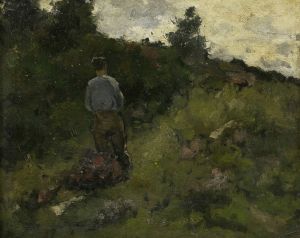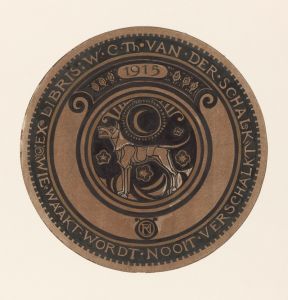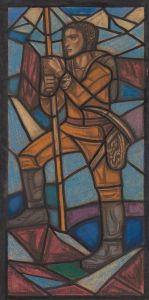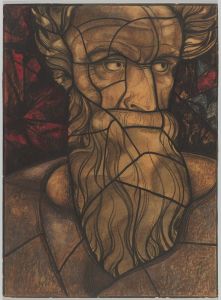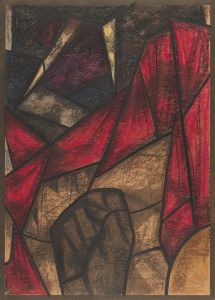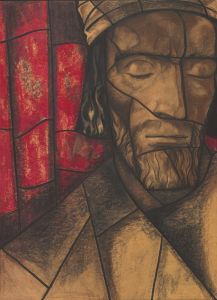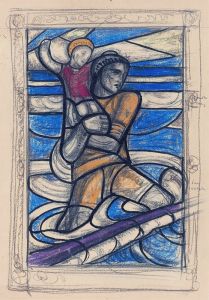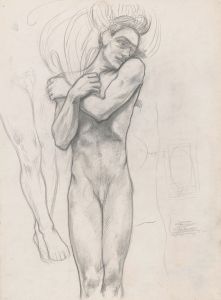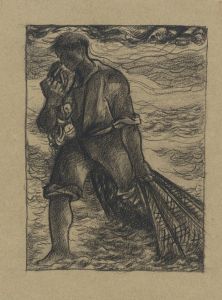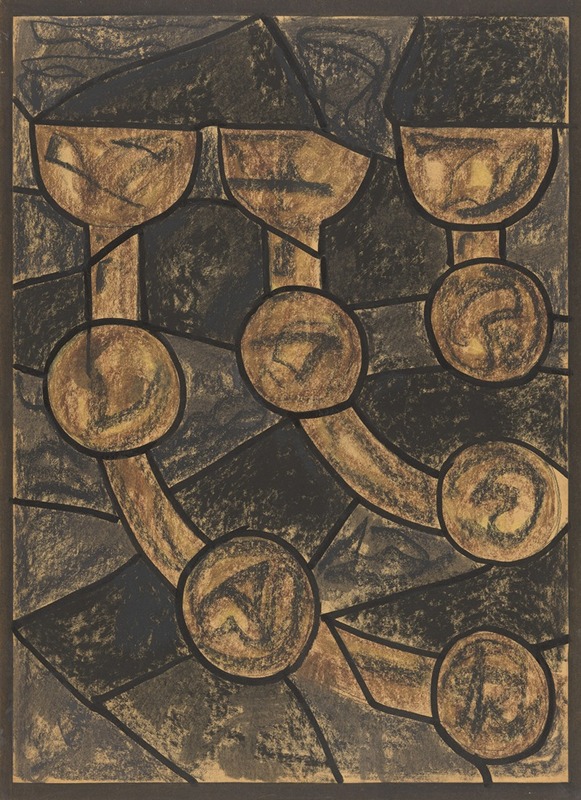
Ontwerp voor raam in het Noordertransept in de Dom te Utrecht 21
A hand-painted replica of Richard Nicolaüs Roland Holst’s masterpiece Ontwerp voor raam in het Noordertransept in de Dom te Utrecht 21, meticulously crafted by professional artists to capture the true essence of the original. Each piece is created with museum-quality canvas and rare mineral pigments, carefully painted by experienced artists with delicate brushstrokes and rich, layered colors to perfectly recreate the texture of the original artwork. Unlike machine-printed reproductions, this hand-painted version brings the painting to life, infused with the artist’s emotions and skill in every stroke. Whether for personal collection or home decoration, it instantly elevates the artistic atmosphere of any space.
Richard Nicolaüs Roland Holst was a prominent Dutch artist known for his contributions to the Arts and Crafts movement in the Netherlands. He was born on December 4, 1868, in Amsterdam and became a significant figure in the development of Dutch art during the late 19th and early 20th centuries. Roland Holst was not only a painter but also a designer and a poet, which allowed him to engage with a variety of artistic disciplines throughout his career.
One of his notable works is the "Ontwerp voor raam in het Noordertransept in de Dom te Utrecht 21," which translates to "Design for a Window in the North Transept in the Cathedral of Utrecht 21." This piece is part of a series of designs Roland Holst created for stained glass windows in the Dom Church, or St. Martin's Cathedral, in Utrecht, Netherlands. The cathedral is one of the most important Gothic structures in the country and has a rich history dating back to its initial construction in the 13th century.
Roland Holst's involvement with the Dom Church project was part of a broader movement to restore and enhance the cathedral's interior with new artworks that respected its historical and architectural significance. His designs for the stained glass windows were intended to complement the Gothic style of the cathedral while also introducing elements of the modern artistic movements of his time.
The stained glass window designs by Roland Holst are characterized by their intricate patterns and vibrant colors. They often depict religious themes and figures, reflecting the spiritual function of the cathedral. Roland Holst's work in stained glass is noted for its harmonious blend of traditional iconography with a modern aesthetic, showcasing his ability to innovate within the constraints of ecclesiastical art.
Roland Holst was influenced by the Arts and Crafts movement, which emphasized craftsmanship and the decorative arts. This influence is evident in his attention to detail and the meticulous execution of his designs. His work on the Dom Church windows is a testament to his skill as a designer and his commitment to integrating art with architecture.
Throughout his career, Roland Holst was associated with various artistic groups and movements. He was a member of the Amsterdamse Joffers, a group of female artists in Amsterdam, and was also connected to the socialist movement in the Netherlands. His political beliefs occasionally informed his art, as he sought to create works that were not only aesthetically pleasing but also socially meaningful.
In addition to his work on the Dom Church, Roland Holst's artistic legacy includes numerous other stained glass projects, murals, and paintings. He was a respected teacher and mentor to many young artists and played a significant role in shaping the direction of Dutch art in the early 20th century.
Richard Nicolaüs Roland Holst passed away on December 31, 1938, leaving behind a rich body of work that continues to be celebrated for its beauty and craftsmanship. His contributions to the Dom Church in Utrecht remain a significant part of his artistic legacy, reflecting his ability to blend tradition with innovation in the service of both art and spirituality.





